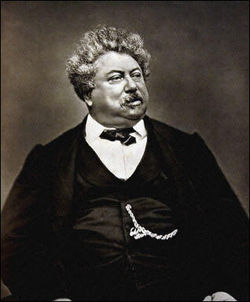
Alexandre Dumas in chapter 21 of his "Memoirs" wrote some beautiful pages on le Pavillon Henri II, then owned by Mr. Deviolaine who was his godfather. Two quotes:
-"Now, in the midst of this darkness in which, similar to dreams half erased, float the early years of my life, stands out, with great precision, the memory of the three main houses in which passed my childhood."
-"The house of Mr Deviolaine was by me a much appreciated palace..."